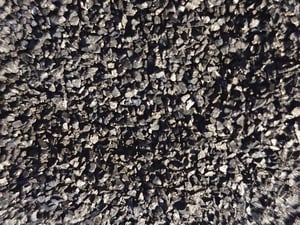Many analyses have shown that our wastewater contains micropollutants that can harm the environment and our health. But solutions already convincingly proven by drinking water production specialists are now available to local authorities to address the problem. The experts at Saur Group recommend a solution based on the adsorption of micropollutants by a fluidized bed of continuously regenerated activated carbon micro-granules. This solution is not only efficient, but also requires a relatively modest investment.
Our wastewater contains micropollutants with the potential to damage health and disrupt the natural environment. Fortunately, local authorities now have access to solutions that can address this issue effectively.
Micropollutants fall into two broad categories:
- Mineral micropollutants, such as the heavy metals removed from wastewater during the biological treatment stage of the treatment plan process
- Organic micropollutants, such as drug residues and pesticides on which conventional microorganisms have variable effects in terms of performance, and which are currently unregulated in France.
Controlled micropollutant processes
So-called tertiary treatment processes can be used by local authorities in their wastewater treatment plants to protect water resources against such pollution. There are three main categories of tertiary process:
- chemical oxidation
- adsorption using activated carbon
- membrane filtration
These are the same as those that have been used for many years in drinking water production. These processes have therefore been fully proven in practice. They have also proven to be just as effective in treating pesticides as they are in treating drug residues.
The experts at Saur Group believe that the solution based on adsorption of micropollutants by a fluidized bed of continuously regenerated activated carbon micro-granules offers many advantages over competitor solutions. The Group’s CarboPlus solution was patented in 2005. This technology is operating in a number of drinking water production and wastewater treatment facilities across France and Switzerland.
The benefits of activated carbon

Solutions based on granular activated carbon filters are not suitable for wastewater treatment, because wastewater contains residual suspended solids that can quickly clog filters. The only way of getting around this problem is to considerably upsize the plant, and therefore increase its footprint substantially.
Caption: Activated carbon
The fluidized bed used in the CarboPlus solution is less sensitive to suspended solids. This fact enables plants to be more compact, which in turn limits the upfront investment cost.
The experts at Saur Group opted to use the micro-granule form of activated carbon for its regenerative properties, which are absent from powdered activated carbon, and facilitate the total elimination of micropollutants, unlike other solutions that cannot offer this radical solution, such as oxidation-based technologies. Oxidation does not eliminate micropollutant molecules, but rather transforms them with the aim of reducing their potential negative effects. However, that now proves not to be the case, because it is possible that some derivatives of oxidized molecules can become more harmful than they were before treatment.
Treating micropollutants at the wastewater collection point
The CarboPlus solution binds the micropollutant molecules to the activated carbon granules, which therefore become gradually saturated. But because they are regularly replaced, the system continuously operates at its optimal adsorption capacity. The spent carbon can then be regenerated by heat treatment. At temperatures of several hundred degrees, the organic molecules are destroyed (thereby removing micropollutants from the environment), but the charcoal matrix remains. The regenerated carbon can therefore be used again.
Find out more, and get answers to all your questions by contacting us: